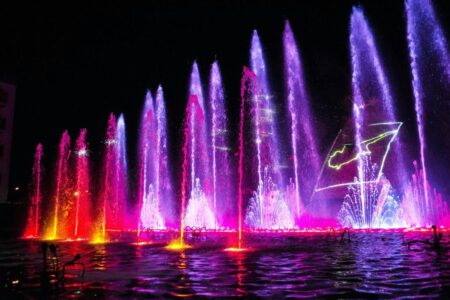Cyprus has long been popular among Russians as a place for vacations or long-term residence. Many people move here permanently to live surrounded by picturesque nature, the sea, and almost year-round warm sunshine. The issue of housing is resolved in various ways: some opt for long-term rentals, others purchase secondary or new apartments, while others build their own homes in Cyprus, which, according to many investors, is the most profitable investment in real estate. In this article, we will discuss how construction is organized on the island, what rules and traditions exist, and what you need to know about building in Cyprus.
Contents
Features of Construction in Cyprus
After Cyprus joined the European Union in 2004, the legal framework and national standards were revised to align with European standards. Significant steps were taken to improve conditions for non-resident investors: the process of obtaining a residence permit became simpler and more lenient, the process of acquiring real estate became safer, and the quality of construction significantly improved.
The government closely monitors the activities of developers to ensure that the island’s economic and natural potential is used effectively and to the fullest extent. There are specific rules for land use and clear zoning regulations for areas designated for residential, commercial, and industrial construction.
Due to the volcanic origin of the island’s mountain ranges, all buildings in Cyprus are designed and constructed with seismic considerations specific to each region. Therefore, different regions have varying height restrictions for buildings. For example, buildings in Paphos can have up to 4 floors, while in Nicosia, they can reach up to 12 floors. In some areas, it is permissible to construct an additional basement level, often used for parking.
Another requirement for developers is that the building’s exterior must harmonize with the surrounding environment and the overall architectural style of neighboring structures. New buildings should not obstruct existing ones and must be located a certain distance from the shoreline. The coastline is the most sought-after area for construction, so special attention is paid to buildings on the front line. The color of the exterior walls of such buildings must be uniform and approved by local authorities. This ensures that different structures look neat and harmonious together.
Procedure for Obtaining a Building Permit in Cyprus
The design and approval process for construction in Cyprus involves several stages:
- Architectural Design: Developing an architectural plan that considers all the features of the selected construction site.
- Submission to the Municipality: Submitting the plans to the municipal office to obtain architectural approval.
- Engineering Design: Creating an engineering project, with drawings submitted to the relevant government authorities to obtain a building permit.
- Administrative Review: The project undergoes review by various administrative bodies, including checks for water supply, electricity, telecommunications, engineering networks, and fire safety. This audit can take several months, depending on the complexity of the construction project.
Compliance with safety standards is a primary concern during the building process, making it crucial for licensed professionals to oversee all work. Architects, engineers, electricians, and other specialists involved must hold licenses and be personally responsible for the quality and reliability of the construction. They sign off on architectural and engineering plans, bearing personal accountability for the work. As a result, construction professionals in Cyprus take their responsibilities seriously, as their reputation and right to practice are at stake.
- Commencement of Construction: After receiving the building permit, the project can proceed. Licensed specialists oversee the implementation, ensuring all architectural and engineering requirements are met, and sign off on completed work.
- Final Inspection and Handover: Upon completion, the building is inspected by a State Commission, which includes representatives from various government departments, including fire inspectors. They rigorously check adherence to quality standards throughout the construction process and verify the compliance of materials through laboratory tests.
Construction Technologies and Requirements in Cyprus
Architecturally, Cyprus is quite traditional, with most buildings following a characteristic Mediterranean style. Natural stone or reinforced concrete frames are popular construction materials, often combined with brick exterior walls and interior partitions. Earlier, steel, wooden, or block structures were commonly used, so much of the secondary housing stock is made from these materials.
For staircases and floors, marble tiles or ceramics are often used to provide a cool feel, along with laminate or parquet flooring. Walls are typically plastered and painted, as wallpaper is rarely used due to the humid climate of Cyprus. Both local and imported materials are used in construction.
With the introduction of European construction standards, requirements for soundproofing and insulation in buildings became stricter. Walls and roofs must use high-density foam insulation at least 5 cm thick, leading to an increase in standard wall thickness. New regulations also require exterior walls to be made of 25 cm thick brick (previously 20 cm) or constructed with two rows of bricks with an insulating foam layer in between.
Electrical wiring running through floors must be encased in plastic tubes, covered with foam concrete, screed, and a decorative finish. According to regulations adopted in 2007, all metal interior elements must be grounded. Many homes also have highly sensitive automatic devices installed to monitor power flow, shutting down electrical equipment in case of overload or short circuit, which serves as an additional fire safety measure.
Building Layouts in Cyprus
The number of rooms in Cypriot homes is determined by the number of bedrooms. Hallways and kitchens are not counted as rooms and are usually not separated. When entering a home in Cyprus, one typically steps into an open space that combines the hallway, kitchen, dining area, and living room. Only the bedrooms are isolated, each equipped with its own bathroom.
Balconies and verandas play a significant role in Cypriot homes. Cyprus’ climate allows for spending much of the day outdoors, so many residents prefer to dine outside. Developers take this into account by designing spacious verandas and balconies, often attached to each bedroom. If there is surrounding land, separate wooden gazebos and pools are built, both for private homes and residential complexes with apartments.
Cyprus’ climatic conditions directly influence construction: buildings are positioned to maximize exposure to sunlight, reducing the need for electricity for lighting, air conditioning, and heating, which are among the highest costs of home maintenance.
As an additional energy resource, solar panels are installed on the roofs of houses and residential complexes to heat water (there is no central hot water supply in Cyprus). Due to the island’s abundant sunshine throughout most of the year, this method of energy storage is highly efficient.
Our company is ready to organize the construction of your home from start to finish: from finding a suitable plot to selecting furniture! Contact us, and together we will build the house of your dreams!
















